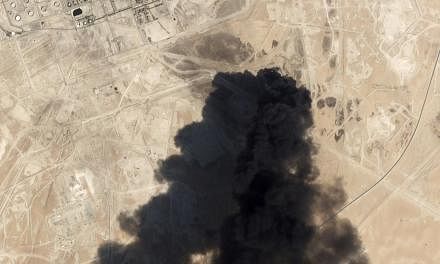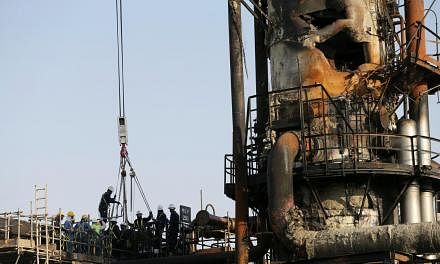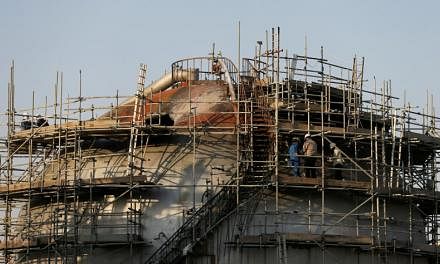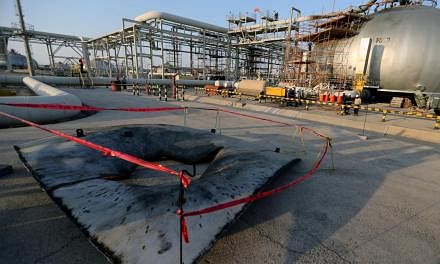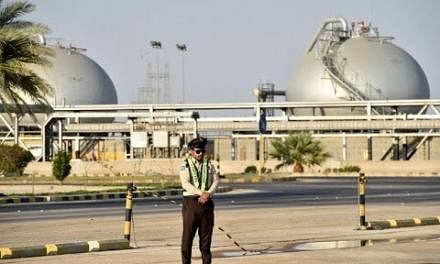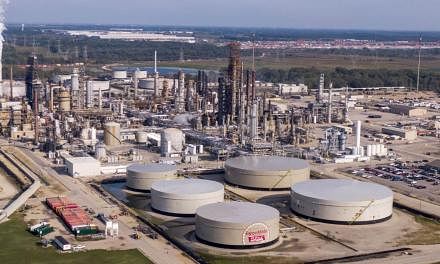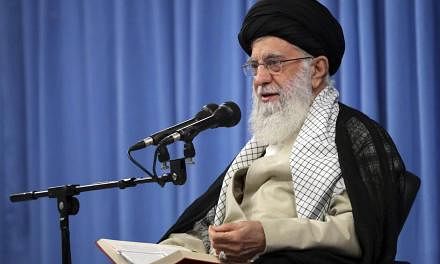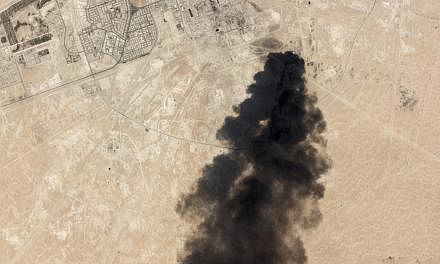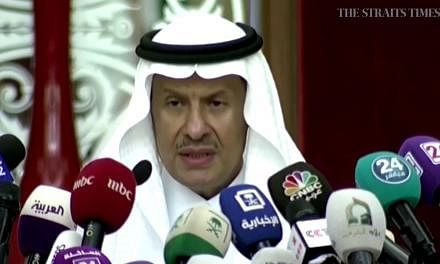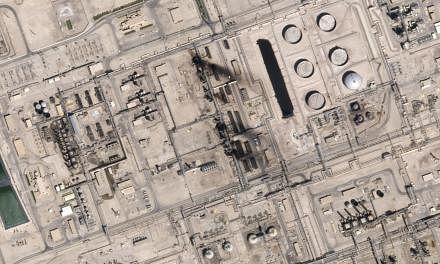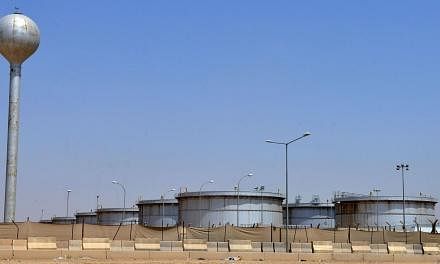DUBAI (BLOOMBERG) - Iranian-backed Yemeni rebels said oil installations in Saudi Arabia remain a target after drone attacks on two major sites slashed the kingdom's output by half and triggered a record surge in oil prices.
The rebel group said its weapons could reach anywhere in Saudi Arabia. Saturday's (Sept 14) strikes were carried out by aircraft equipped with a new type of engine, the Houthi rebel group said.
US Secretary of State Mike Pompeo said on Sunday (Sept 15) that there was no evidence the raids were carried out from Yemen. He blamed Iran instead, and President Donald Trump said the US is "locked and loaded depending on verification" of the culprit.
Iran has denied responsibility.
Saudi Arabia has yet to assign blame. Its state oil company Saudi Aramco is due to give an update on Monday (Sept 16) following the attacks on a major oil field and the world's biggest crude-processing facility at Abqaiq.
Oil posted its biggest ever intraday jump to more than US$71 a barrel after the attack knocked out about half of Saudi Arabia's production.
The Trump administration and Saudi leaders now face a difficult choice in how to respond to Iran or its proxies without triggering a broader conflict that could spiral out of control with potentially devastating consequences for global oil markets and the world economy. Neither country has tipped its hand.
"There's no great response here," said Mr Aaron David Miller, senior fellow at the Carnegie Endowment for International Peace.
"The question becomes how does the US navigate between not allowing this precedent to stand on one hand, and avoiding a punitive escalation or one designed to deter future attacks without an escalation. And the answer is there is no answer."
The circumstances of Saturday's attack remain unclear. Two administration officials said on Sunday that cruise missiles may have been used. The officials, who asked not to be identified discussing internal deliberations, didn't rule out the use of armed drones but said the range was beyond anything the Houthis had carried out in the past.
The US government has determined there were 19 points of attack at the crude-processing facility and the Khurais oil field, all on the north or northwest-facing sides - suggesting the weapons used came from that direction.
Iraq lies to the north, and the US in the past has accused Iran of stashing explosives with affiliated militias in the country. Yemen is hundreds of miles to the south.
Saudi Arabia entered Yemen's civil war in 2015 to push back Houthi rebels who captured the capital, Sana'a. Despite devastating aerial bombardment and support for groups on the ground, it has struggled to turn the tide of the war or reinstate the internationally recognised government of Yemen President Abd Rabbuh Mansur Hadi.
The Saudi-led coalition has instead watched local allies turn their guns on each other in recent weeks while the US has said it's looking to talk to the Houthis directly about ending the war.
While analysts estimate Saudi Arabia may be able to restore half of the lost production as early as Monday, Mr Trump said on Twitter on Sunday that he's authorised the release of oil from the Strategic Petroleum Reserve if needed "in a to-be-determined amount sufficient to keep the markets well-supplied".
The stock of about 645 million barrels of crude and petroleum products could help meet demand during the time it would take for the Saudis to repair the facilities. Mr Trump also told US agencies to expedite permitting approvals of oil pipelines.

